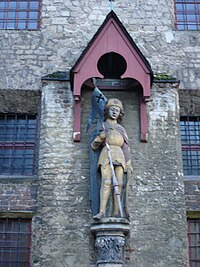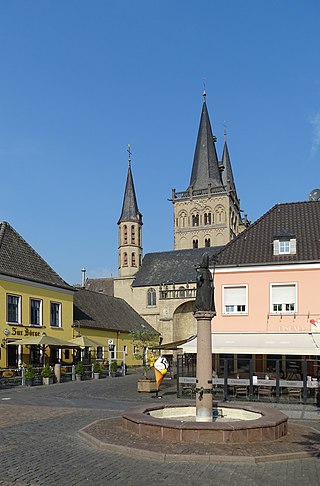
Xanten is a town in the state of North Rhine-Westphalia, Germany. It is located in the district of Wesel.
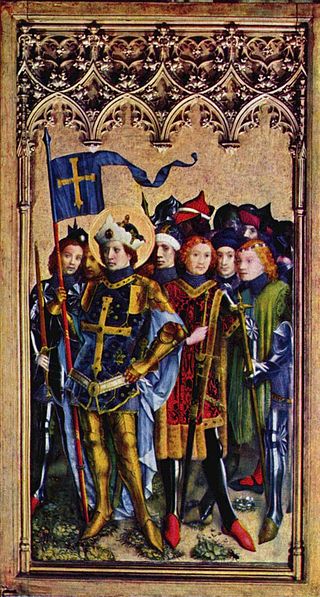
The Theban Legion figures in Christian hagiography as a Roman legion from Egypt—"six thousand six hundred and sixty-six men"— Christians who were martyred together in 286, according to the hagiographies of Maurice, the chief among the Legion's saints. Their feast day is held on September 22.
Agaunum was an outpost in Roman Switzerland, predecessor of the modern city of Saint-Maurice in the canton of Valais, southwestern Switzerland. It was used by the Roman Empire for the collection of the Quadragesima Galliarum. In Christian tradition, Agaunum is known as the place of martyrdom of the Theban Legion.

September 21 - Eastern Orthodox liturgical calendar - September 23

Felix and Regula are Coptic Orthodox and Roman Catholic saints. They are the patron saints of Zürich.
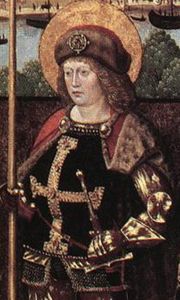
Gereon of Cologne, who may have been a soldier, was martyred at Cologne by beheading, probably in the early 4th century.

Bonn Minster is a Roman Catholic church in Bonn. It is one of Germany's oldest churches, having been built between the 11th and 13th centuries. At one point the church served as the de facto cathedral for the Archbishopric of Cologne, because it is the major church of what was then the Archbishop-Elector's residence. It is now a minor basilica. It served as the inspiration for the Kaiser Wilhelm Memorial Church in Berlin, as Kaiser Wilhelm II had studied in Bonn.
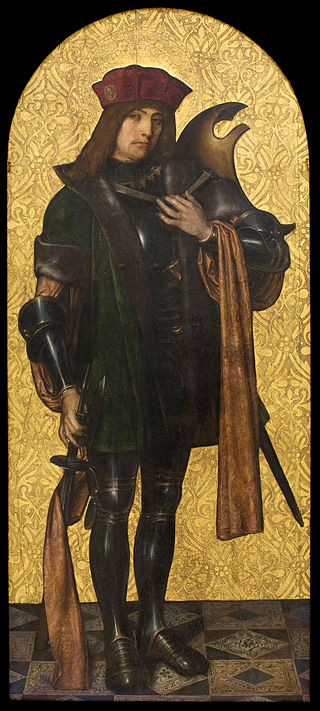
Candidus was a commander of the Theban Legion. The Theban Legion was composed of Christians from Upper Egypt. He is venerated as a Christian saint and martyr.

Xanten Cathedral, sometimes called St. Victor's Cathedral, is a Catholic church situated in Xanten, a historic town in the lower Rhine area, North Rhine-Westphalia, Germany. It is considered the biggest cathedral between Cologne and the sea. In 1936 it was declared a minor basilica by Pope Pius XI. Even though the church is called a cathedral, it has never been the seat of a bishop.

Maurice was an Egyptian military leader who headed the legendary Theban Legion of Rome in the 3rd century, and is one of the favorite and most widely venerated saints of that martyred group. He is the patron saint of several professions, locales, and kingdoms.

Eberigisil was Bishop of Cologne, being the fifth well-attested bishop, and the first with a Frankish name. Evergislu's tenure was marked by the unrest brought about by the migration of peoples, which dominated both city and country. Evergislus tried to build up religious life and ecclesiastical peace.

Defendens of Thebes is venerated as a martyr by the Catholic Church. Venerated as a soldier-saint, Defendens was, according to Christian tradition, a member of the Theban Legion, and thus martyred at Agaunum.

Chiaffredo is venerated as the patron saint of Saluzzo, Italy. Tradition considers him a member of the Theban Legion, but instead of being martyred with this legion at Agaunum, he escaped to Piedmont and was martyred there.

Saint Magnus of Anagni, also known as Magnus of Trani or Magnus of Fabrateria Vetus, is venerated as the patron saint of Anagni.
Magnus of Cuneo is venerated as a martyr and member of the legendary Theban Legion. The center of his cult is situated at the mountain sanctuary known as the Santuario di San Magno, in the Valle Grana, Castelmagno, in the province of Cuneo. His feast day is August 19.

Saint Paulinus is a Baroque church in the city of Trier, Germany. Constructed between 1734 and 1753, the interior was designed by Johann Balthasar Neumann. The ceiling of the nave features a painting by the artist Christoph Thomas Scheffler. The tomb of the saint after whom the church is named, Paulinus of Trier, is located in the church's crypt.
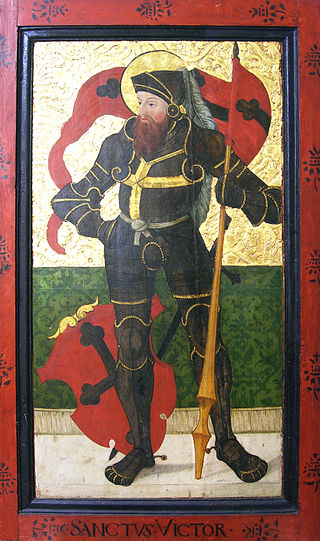
Victor of Solothurn is a martyr and saint of the Catholic Church. He was a soldier of the Theban Legion led by Maurice and died in Solothurn.
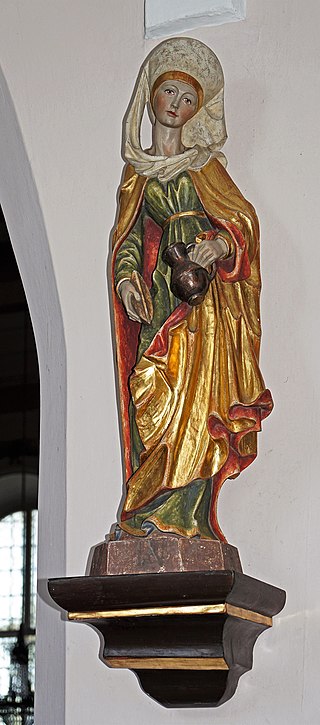
Verena of Zurzach, mostly just called Saint Verena is an early Christian consecrated virgin and hermit. She is especially venerated in Switzerland, where her cult is attested in Bad Zurzach, the reported place of her burial, from at least the 5th century. She is recognized as a saint in the Roman Catholic Church as well as in the Eastern Orthodox Church and the Oriental Orthodox Churches. Her feast is on 1 September.
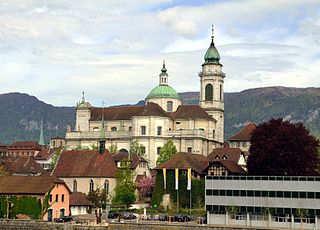
The St. Ursus Cathedral or Solothurn Cathedral is the cathedral of the Roman Catholic Diocese of Basel in the city of Solothurn, Switzerland. It is a Swiss heritage site of national significance.

Saint Gerebern was an Irish priest who baptized Saint Dymphna when she was a child. He was her companion when she fled to Belgium, where he was murdered beside her. His relics were taken to Sonsbeck in Germany, where they were an object of pilgrimage until they were destroyed during World War II. His feast day is 15 May.
